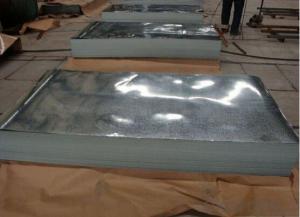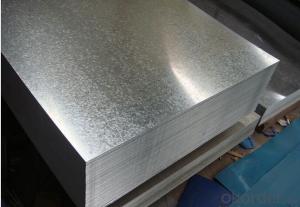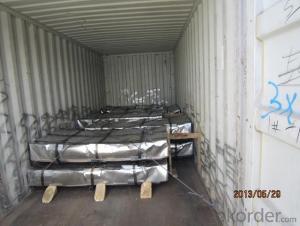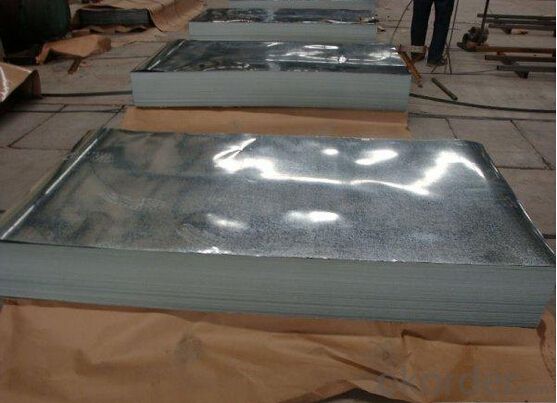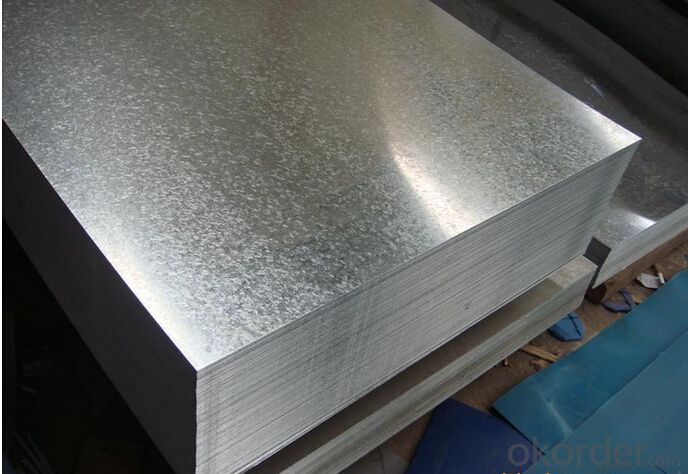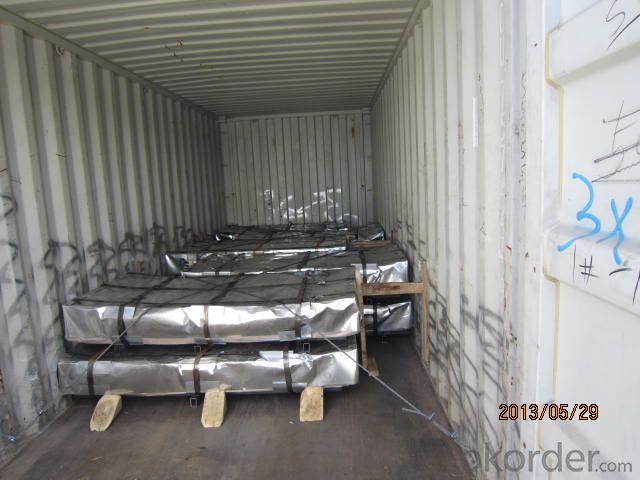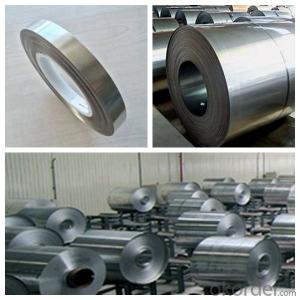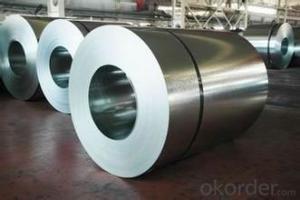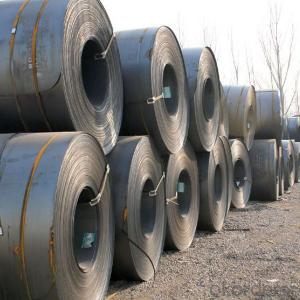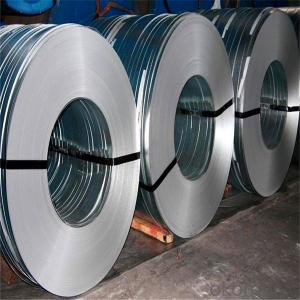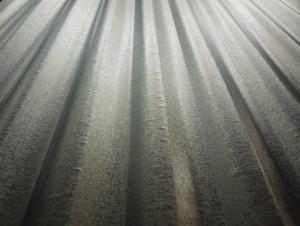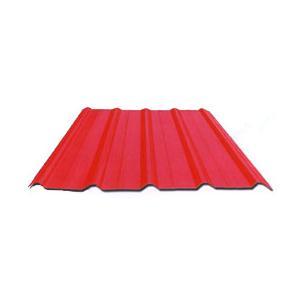High Quality of Cold Rolled Steel Sheet from China
- Loading Port:
- Shanghai
- Payment Terms:
- TT OR LC
- Min Order Qty:
- 100 m.t.
- Supply Capability:
- 5000 m.t./month
OKorder Service Pledge
OKorder Financial Service
You Might Also Like
1.Structure of Cold Rolled Steel Description:
The raw material of cold rolled steel coil/sheet is high quality hot rolled product, and after pickling continuous rolling, degreasing, annealing,skin pass,slitting and cut to length line etc. Along with it many kinds of new technology and new process of global cold rolling production have been applied. Therefore the quality of the goods could be guaranteed. The product is widely used in outdoor and interior decoration, furnishing manufacturing, home appliance, automobile etc.
2.Main Features of the Cold Rolled Steel:
• Excellent process capability
• Smooth and flat surface
• Workability, durability
• Excellent heat resistance performance
• High strength
• Good formability
• Good visual effect
3.Cold Rolled Steel Images
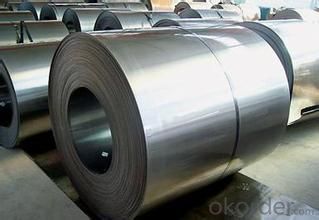
4.Cold Rolled Steel Specification
Standard:AISI,ASTM,DIN,GB,JIS,JIS G3302 ASTM 653M EN10142
Grade: Q195~Q345
Thickness: 0.16mm~1.5mm,0.16-1.5mm
Width: 1250,600-1250mm
Coil weight:3-12 MT
Coil ID:508/610mm
Chemical composition:
C | Si | Mn | Cr | Ni | P | S |
0.150 | 0.476 | 11.231 | 12.50 | 0.900 | 0.039 | 0.010
|
5.FAQ of Cold Rolled Steel
We have organized several common questions for our clients,may help you sincerely:
1.How about your company?
A world class manufacturer & supplier of castings forging in carbon steel and alloy steel,is one of the large-scale professional investment casting production bases in China,consisting of both casting foundry forging and machining factory. Annually more than 8000 tons Precision casting and forging parts are exported to markets in Europe,America and Japan. OEM casting and forging service available according to customer’s requirements.
2.How to guarantee the quality of the products?
We have established the international advanced quality management system,every link from raw material to final product we have strict quality test;We resolutely put an end to unqualified products flowing into the market. At the same time, we will provide necessary follow-up service assurance.
3. How long can we receive the product after purchase?
Usually within thirty working days after receiving buyer’s advance payment or LC. We will arrange the factory manufacturing as soon as possible. The cargo readiness usually takes 15-25 days, but the shipment will depend on the vessel situation.
- Q: What are the common surface treatments for steel sheets?
- The common surface treatments for steel sheets include galvanizing, powder coating, painting, and plating.
- Q: Are steel sheets resistant to rust or corrosion?
- Yes, steel sheets are resistant to rust or corrosion due to the presence of protective coatings or alloys that prevent the metal from oxidizing when exposed to moisture or other corrosive elements.
- Q: How are steel sheets tested for hardness?
- Steel sheets are tested for hardness using various methods, one of the most common being the Rockwell hardness test. In this test, a small indenter, usually a diamond or a hardened steel ball, is pressed into the surface of the steel sheet with a known force. The depth of penetration is measured and converted into a hardness value using a standardized scale. Another method used is the Brinell hardness test, where a hardened steel ball is pressed into the surface of the steel sheet under a specific load. The diameter of the indentation is measured and used to calculate the hardness value. Additionally, there is the Vickers hardness test, which utilizes a pyramid-shaped diamond indenter. The test is similar to the Rockwell test, but instead of measuring the depth of penetration, the test measures the diagonal length of the indentation to determine the hardness value. These hardness tests provide valuable information about the mechanical properties of steel sheets, such as their resistance to deformation and wear. The results of these tests help ensure that the steel sheets meet the required specifications and can be used in various applications where hardness is a critical factor.
- Q: Can steel sheets be used in architectural or decorative applications?
- Yes, steel sheets can definitely be used in architectural or decorative applications. Steel is a versatile and durable material that offers numerous benefits for both structural and aesthetic purposes. In architectural applications, steel sheets can be used for roofing, wall cladding, and structural framing, providing strength, stability, and resistance to harsh weather conditions. Additionally, steel sheets can be fabricated into various shapes, sizes, and finishes, allowing architects and designers to create unique and visually appealing structures. In decorative applications, steel sheets can be used for interior and exterior design elements such as decorative panels, screens, railings, and sculptures. The ability to customize steel sheets with various patterns, textures, and colors makes them a popular choice for enhancing the visual appeal of buildings and spaces. Overall, steel sheets are a versatile material that can be utilized in a wide range of architectural and decorative applications, offering both functionality and aesthetics.
- Q: How do steel sheets perform in marine environments?
- Steel sheets perform well in marine environments due to their high strength and corrosion resistance properties. The presence of saltwater and high levels of moisture in marine environments can cause significant damage to many materials, but steel sheets are specifically designed to withstand these conditions. One of the key factors that contribute to the performance of steel sheets in marine environments is their corrosion resistance. Steel sheets are typically coated with zinc or other protective coatings, such as epoxy or galvanized coatings, which act as a barrier against corrosion. These coatings prevent the steel from coming into direct contact with saltwater and moisture, reducing the risk of rust and deterioration. Additionally, the high strength of steel sheets makes them highly durable in marine environments. They can withstand the harsh conditions, including waves, strong winds, and impact from debris. This strength ensures that steel sheets can maintain their structural integrity and offer long-term performance. Furthermore, steel sheets are also known for their fire resistance, which is crucial in marine environments where safety is of utmost importance. Steel has a high melting point and does not contribute to the spread of fire, making it a reliable choice for marine applications. However, it is important to note that even with their excellent performance, steel sheets may still require regular maintenance and inspection in marine environments. This includes monitoring for signs of corrosion, repairing or replacing damaged coatings, and addressing any potential issues promptly to ensure their continued performance. In conclusion, steel sheets are a reliable choice for marine environments due to their corrosion resistance, high strength, and fire resistance. They can withstand the challenging conditions of saltwater, moisture, and impact, making them an ideal material for various marine applications.
- Q: How do steel sheets perform in corrosive environments like saltwater?
- Steel sheets can be prone to corrosion in saltwater environments due to the presence of chloride ions. However, their performance can vary depending on the type of steel and the protective measures taken. Stainless steel sheets, for example, contain chromium which forms a passive layer that prevents corrosion. Additionally, surface treatments such as galvanization or applying protective coatings can further enhance their resistance to corrosion in saltwater.
- Q: Are steel sheets suitable for magnetic shielding applications?
- Yes, steel sheets are suitable for magnetic shielding applications.
- Q: Can steel sheets be used in telecommunications applications?
- Yes, steel sheets can be used in telecommunications applications. Steel is commonly used in the construction of telecommunication towers and antennas due to its strength, durability, and ability to withstand harsh weather conditions. It provides a stable structure for mounting various telecommunications equipment and ensures reliable performance.
- Q: Can steel sheets be used for manufacturing solar panels?
- No, steel sheets cannot be used for manufacturing solar panels as they are not suitable for the purpose. Solar panels require materials with specific properties such as high transparency, light weight, and conductivity, which steel sheets do not possess.
- Q: What is the difference between a hot rolled and cold rolled stainless steel sheet?
- The main difference between a hot rolled and cold rolled stainless steel sheet lies in the production process. Hot rolled stainless steel sheets are made by heating a stainless steel slab above its recrystallization temperature and then rolling it through a series of rollers until the desired thickness is achieved. This process results in a rough, scaled surface with a characteristic oxide layer. On the other hand, cold rolled stainless steel sheets are produced by further processing the hot rolled sheets. The hot rolled sheets are first annealed, which involves heating them and then cooling them slowly to regulate the microstructure and remove any stresses. After annealing, the sheets are cold rolled, which means they are passed through a set of rollers at room temperature to achieve the desired thickness. This process results in a smoother, more refined surface with improved mechanical properties. In summary, hot rolled stainless steel sheets have a rough surface and are less precise in terms of thickness, while cold rolled stainless steel sheets have a smoother surface and are more precise in terms of thickness. Cold rolled sheets also tend to have better mechanical properties due to the additional processing steps involved.
Send your message to us
High Quality of Cold Rolled Steel Sheet from China
- Loading Port:
- Shanghai
- Payment Terms:
- TT OR LC
- Min Order Qty:
- 100 m.t.
- Supply Capability:
- 5000 m.t./month
OKorder Service Pledge
OKorder Financial Service
Similar products
Hot products
Hot Searches
Related keywords
